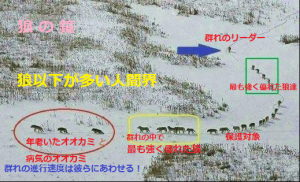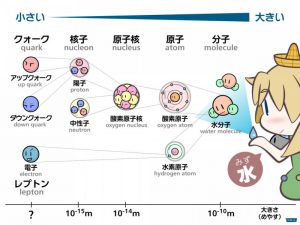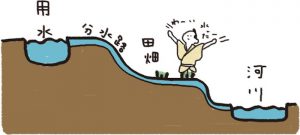第四に,前述のことが受け容れられるならば,2種類の空間が存在しなければならない。(即ち)一つは経験,特に私の視覚領域における経験,によって知られる空間(注:私的空間)であり,他の一つは推論によってのみ知られ,因果法則によって縛られる,物理学において生ずる空間(注:客観的/公共的空間)である。
 この2種類の空間を区別しないことが多くの混乱のもとである。再び,誰か他人の脳を調べている(観察している)生理学者の場合をとってみよう。常識は,生理学者は(その人の)脳を見ており,彼が見ているものは物質であると考えている(想定している)。彼(生理学者)の見ているものは,彼(生理学者)が調べている患者(被験者)によって考えられているものとは明らかに全く異なっているので(注:患者(被験者)は,自分の脳は単なる物質ではなく,考えていることは単なる物的な脳内現象ではない,と考えている!),人々は精神と物質とはまったく異なっているものであると結論づける。物質は生理学者の見るものであり,精神は患者の考えているものである。しかし,この考え(理解)の順序は,もし私が正しければ,混乱だらけである。
この2種類の空間を区別しないことが多くの混乱のもとである。再び,誰か他人の脳を調べている(観察している)生理学者の場合をとってみよう。常識は,生理学者は(その人の)脳を見ており,彼が見ているものは物質であると考えている(想定している)。彼(生理学者)の見ているものは,彼(生理学者)が調べている患者(被験者)によって考えられているものとは明らかに全く異なっているので(注:患者(被験者)は,自分の脳は単なる物質ではなく,考えていることは単なる物的な脳内現象ではない,と考えている!),人々は精神と物質とはまったく異なっているものであると結論づける。物質は生理学者の見るものであり,精神は患者の考えているものである。しかし,この考え(理解)の順序は,もし私が正しければ,混乱だらけである。
生理学者が見るものは,もしこれが彼(生理学者)が経験するもの(あるもの)を意味するならば,それは彼(生理学者)自身の心の中の事象(注:心的事象!)であり,彼が自分自身が見ていると想像している(被験者の)脳と極めて厳密な因果的結合(連鎖)を有しているだけである。
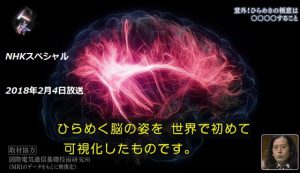 これは物理学のことを考えればすぐに明らかになることである。彼が自分が見ている(観察している)と思っている(被験者の)脳の中では,量子遷移が存在している(起こっている)。(注:みすず書房版の中村訳では「彼の考えている脳髄の中で彼は量子遷移が生じるのを見ている」となっており,何とこの1950年当時の生理学者は量子遷移を見ることができる超能力者ということになっている!)量子遷移は光子(photns)の放出(光エネルギーの放出)へと導き,光子は介在する空間を横切って生理学者の眼に衝突する。するとそれは,(網膜の)桿体と錐体に複碓な出来事,及び,視神経を通って脳に達する撹乱(刺激)を惹き起こす。この撹乱(刺激)が脳に達すると,生理学者が「他人の脳を見る」と言われる経験をもつことになる。
これは物理学のことを考えればすぐに明らかになることである。彼が自分が見ている(観察している)と思っている(被験者の)脳の中では,量子遷移が存在している(起こっている)。(注:みすず書房版の中村訳では「彼の考えている脳髄の中で彼は量子遷移が生じるのを見ている」となっており,何とこの1950年当時の生理学者は量子遷移を見ることができる超能力者ということになっている!)量子遷移は光子(photns)の放出(光エネルギーの放出)へと導き,光子は介在する空間を横切って生理学者の眼に衝突する。するとそれは,(網膜の)桿体と錐体に複碓な出来事,及び,視神経を通って脳に達する撹乱(刺激)を惹き起こす。この撹乱(刺激)が脳に達すると,生理学者が「他人の脳を見る」と言われる経験をもつことになる。
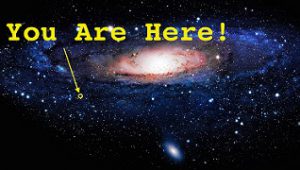 何らかのものがその因果連鎖を妨害すれば,たとえば(観察対象の)他人の脳が暗闇の中にあったり,彼(生理学者)が目を閉じたり,彼が眼が見えなったり,あるいは彼が脳の視覚中枢に弾丸を受けたりすれば,彼は,「他人の脳を見る」と言われる経験をもたない(ことになる)。また,その事象は,彼が見ていると思っている時と同時には起らない。地球上の対象物(物体)の場合には,時間の違いは無視できるが,天体の場合には何百万年というほど,その相違(時間差)は大きいかもしれない(注:地球上で人間が見るものは起こってすぐのものであろうが,宇宙から光がやってきて見ている天体の状況はずっと昔に起こったことかも知れない)。
何らかのものがその因果連鎖を妨害すれば,たとえば(観察対象の)他人の脳が暗闇の中にあったり,彼(生理学者)が目を閉じたり,彼が眼が見えなったり,あるいは彼が脳の視覚中枢に弾丸を受けたりすれば,彼は,「他人の脳を見る」と言われる経験をもたない(ことになる)。また,その事象は,彼が見ていると思っている時と同時には起らない。地球上の対象物(物体)の場合には,時間の違いは無視できるが,天体の場合には何百万年というほど,その相違(時間差)は大きいかもしれない(注:地球上で人間が見るものは起こってすぐのものであろうが,宇宙から光がやってきて見ている天体の状況はずっと昔に起こったことかも知れない)。
常識が見ていると考える物理的対象に対する視覚的経験の関係は,このように間接的かつ因果的なものであり,常識が存在する想像する両者の密接な類似性を想定する理由はない。
 これら全ては,私が直前に述べた2種類の空間と関係している。私は,彼(哲学者)らの思想は彼らの頭の中にあると言って,哲学者たちの皆さんを恐れさせた。彼らは一声で(彼らの)頭の中にはどんな思想も存在しないと私に確証させた(私は確証した)が,礼儀からいってこの保証を受け容れることはできないだろう(「哲学者はみな頭は空っぽ」なんて非礼なので言えない)。
これら全ては,私が直前に述べた2種類の空間と関係している。私は,彼(哲学者)らの思想は彼らの頭の中にあると言って,哲学者たちの皆さんを恐れさせた。彼らは一声で(彼らの)頭の中にはどんな思想も存在しないと私に確証させた(私は確証した)が,礼儀からいってこの保証を受け容れることはできないだろう(「哲学者はみな頭は空っぽ」なんて非礼なので言えない)。
けれども,おそらく,私のこの言及は非常に省略した言い方であるので,私が言おうとしていることを厳密に説明するのがよいであろう。
 精確に述べれば,私が言おうとしているのは次の通りである。
精確に述べれば,私が言おうとしているのは次の通りである。
(即ち)物理的空間(物的空間)は知覚空間と異なり,因果的な近接(隣接)に基づいている。感覚による知覚の因果的近接性は,その直前に先行する物理的刺激,およびその刺激の直後に続く物理的反応とともにある。物理的空間における正確な位置は,単独の事象には属しておらず,古いスタイルの言語に固執すれば,物理学が一片の物質の瞬間的状態とみなすような事象群に属している。一つの思考とは事象群の一つであり,それらは,物理学の用途としては,脳の中のある領域とみなされる事象群(の一つ)であろう。思考が脳の中にあるというのは次のことを簡略化したものである。即ち,思考とは共在する事象の集まりであり,その集まりは,感覚印象(もしそれらが「思考群(思想)」と呼ばれるべきなら)の場合を除いて,心理学的空間の中に存在するという見解を,私は,提示(示唆)しているのではない(ということである)(注:単に物理的に眼などの生命体の感覚器官に刺激が届いただけなら,物理的空間の中に存在するが,その刺激を人間などが受け身ではなく積極的に知覚する場合には心理学的空間の中に存在すると考えられる,ということか? 感覚と知覚の違いがここにある)。
Fourth: if the foregoing is accepted there must be two sorts of space, one the sort of space which is known through experience, especially in my visual field, the other the sort of space that occurs in physics, which is known only by inference and is bound up with causal laws. Failure to distinguish these two kinds of space is a source of much confusion. I will take again the case of a physiologist who is examining someone else’s brain. Common sense supposes that he sees that brain and that what he sees is matter. Since what he sees is obviously quite different from what is being thought by the patient whom he is examining, people conclude that mind and matter are quite different things. Matter is what the physiologist sees, mind is what the patient is thinking. But this whole order of ideas, if I am right, is a mass of confusions. What the physiologist sees, if we mean by this something that he experiences, is an event in his own mind and has only an elaborate causal connection with the brain that he imagines himself to be seeing. This is obvious as soon as we think of physics. In the brain that he thinks he is seeing there are quantum transitions. These lead to emission of photons, the photons travel across the intervening space and hit the eye of the physiologist. They then cause complicated occurrences in the rods and cones, and a disturbance which travels along the optic nerve to the brain. When this disturbance reaches the brain, the physiologist has the experience which is called “seeing the other man’s brain.” If anything interferes with the causal chain, e.g. because the other man’s brain is in darkness, because the physiologist has closed his eyes, because the physiologist is blind, or because he has a bullet in the brain at the optic center, he does not have the experience called “seeing the other man’s brain.” Nor does the event occur at the same time as what he thinks he sees. In the case of terrestrial objects, the difference of time is negligible, but in the case of celestial objects it may be very large, even as much as millions of years. The relation of a visual experience to the physical object that common sense thinks it is seeing is thus indirect and causal, and there is no reason to suppose that close similarity between them that common sense imagines to exist. All this is connected with the two kinds of space that I wrote of a moment ago. I horrified all the philosophers by saying that their thoughts were in their heads. With one voice they assured me that they had no thoughts in their heads whatever, but politeness forbids me to accept this assurance. Perhaps, however, it might be well to explain exactly what I mean, since the remark is elliptical. Stated accurately, what I mean is as follows: physical space, unlike the space of perception, is based upon causal contiguity. The causal contiguities of sense perceptions are with the physical stimuli immediately preceding them and with the physical reactions immediately following them. Precise location in physical space belongs not to single events but to such groups of events as physics would regard as a momentary state of a piece of matter, if it indulged in such old-fashioned language. A thought is one of a group of events, such as will count for purposes of physics as a region in the brain. To say that a thought is in the brain is an abbreviation for the following: a thought is one of a group of compresent events, which group is a region in the brain. I am not suggesting that thoughts are in psychological space, except in the case of sense impressions (if these are to be called “thoughts”)
出典:Bertrand Russell : Mind and Matter (1950?)
詳細情報:http://russell-j.com/beginner/19501110_Mind-Matter200.HTM
<寸言>
目の前にある物を見ていると,現在起こっていることをそのまま見ている,と我々人間は思ってしまう。光がなければ我々は何も見えない。目の前にある物からやってくる光を目がとらえ、そこからの刺激が脳に届き、その効果によって我々は「物を見ることができる」と思う。目の前にあるものからは瞬時に光が届く。しかし、遠くに「存在する物」からの光はそういうわけにはいかない。
たとえば 現在の宇宙は約138億光年前にビッグバンによって誕生したと言われている。そうして、我々は宇宙の果を直接見ることはできないが、宇宙の果からやってくる光や電波をとらえることによって、宇宙が誕生して間もないころの姿(映像)を我々は「見ることができる」。もちろん「見ることができる」といっても、私達が「見ている」のは130億光年以上もかかって、我々のところに到達した電波や光などのデータから構成されたものである。即ち、それは、我々の感覚器官が受容した刺激が我々の脳に届いて起こった脳内現象であり、130億光年前の宇宙の姿(のイメージ)であって、現在の宇宙の姿ではないのである。





